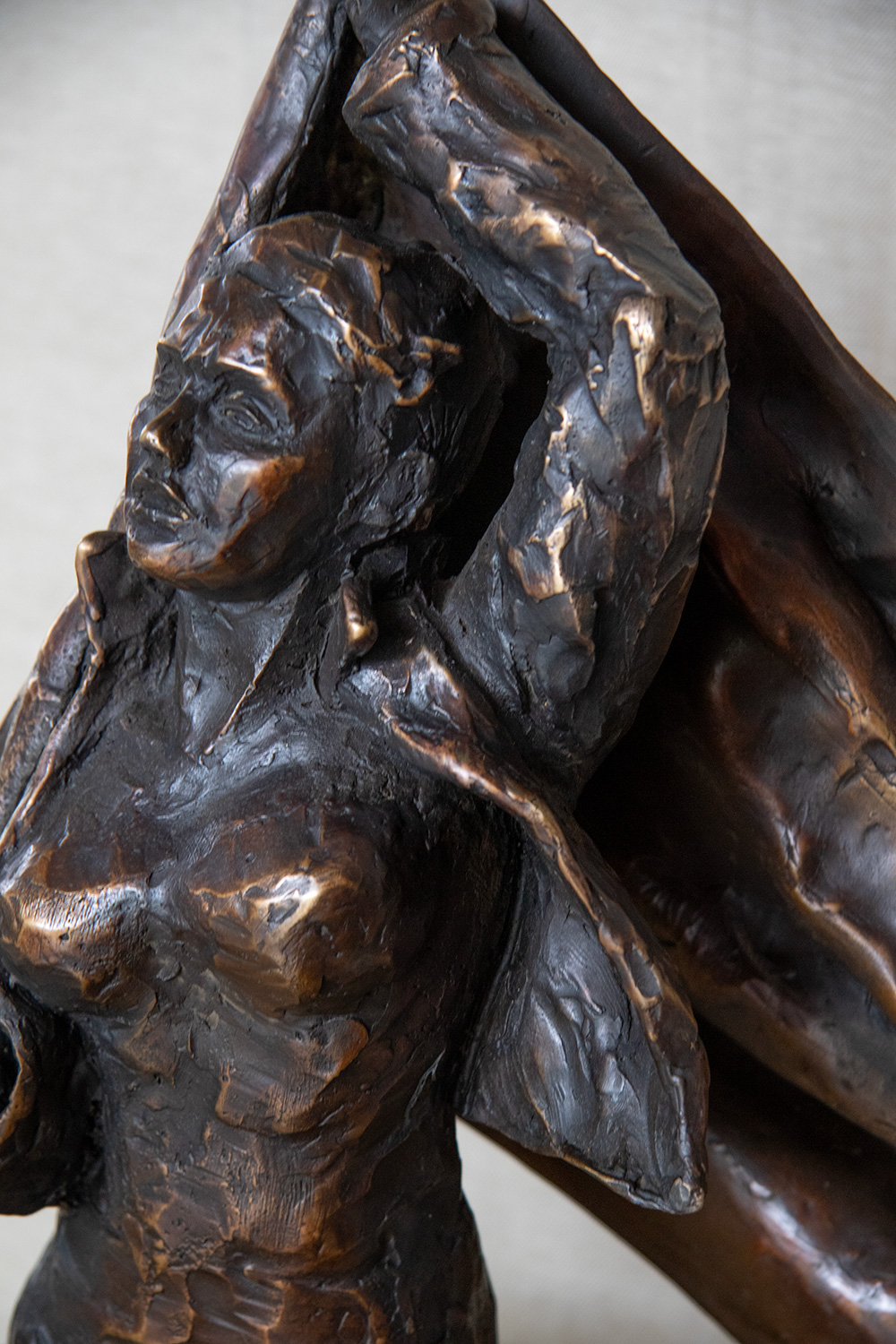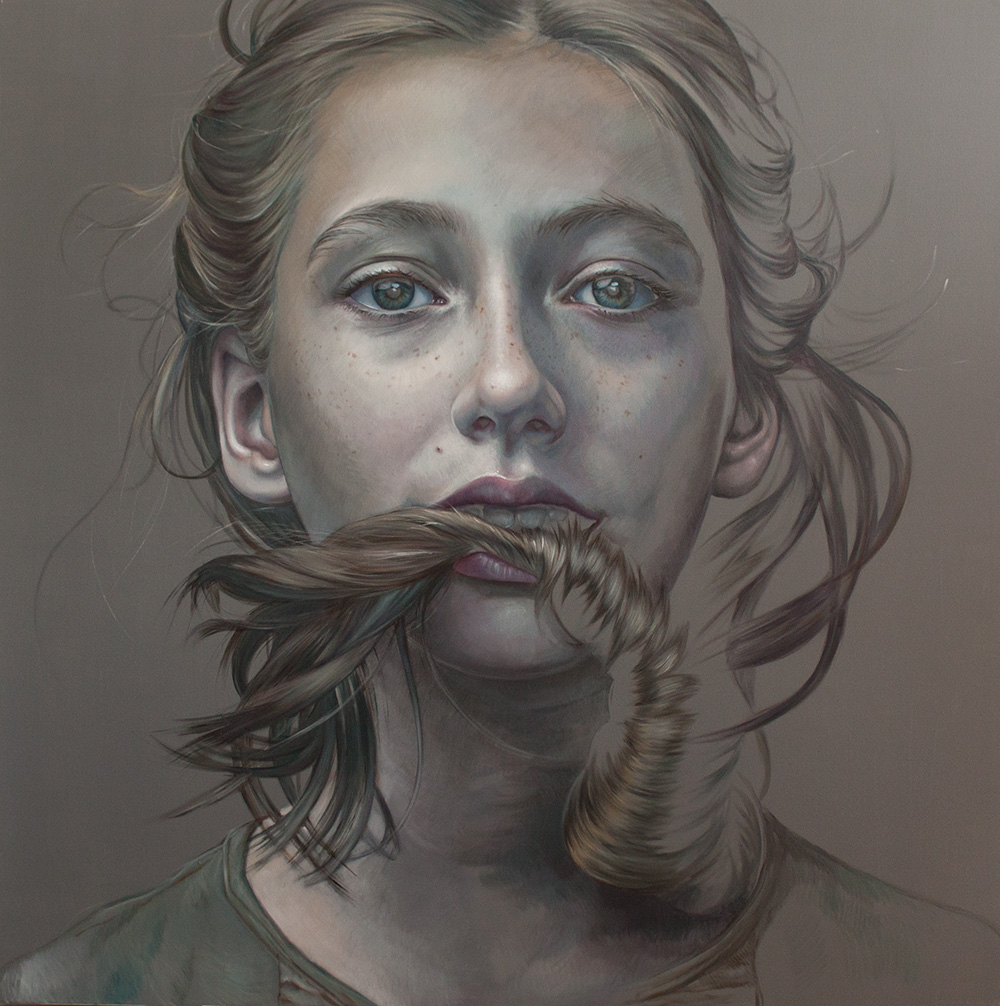Artist Statement by Kathrin Longhurst
“Dystopia” December 2024
In Dystopia, Longhurst’s latest series, she confronts the personal and global anxieties that shape her view of an uncertain future. Through a stark palette and raw, uncompromising forms, she explores themes of resilience and disillusionment, evoking a world on the brink of collapse. The series presents bronze figures of female fighters, their forms darkened by a ferric nitrate patina, standing atop industrial, brutalist metal plinths. These figures—a nod to Longhurst’s earlier heroines—represent freedom fighters, agitators, and survivors. We meet once again familiar personas like Flag Girl, Grenade Girl, and Pilot Girl, now re-imagined in a darker tone, as beacons of resistance and reminders of vulnerability.
The accompanying mixed media works echo this sense of disquiet. Large-scale and monochromatic, they are constructed with materials that bear the marks of decay—torn edges, crumpled fabrics, and distressed textures that lend a sense of erosion and collapse. Behind these female figures looms the shadow of warplanes, a symbol of entrenched violence and the persistent spectre of male-dominated aggression. The aircraft serve as a grim reminder of the impact of militarism on civilian lives, especially on women and children, who often bear the heaviest toll in conflicts. For example, it is estimated that 70% of casualties in places like Gaza are women and children, underscoring the human cost of global turmoil.
In pieces like Cacotopia, we glimpse a ravaged, dystopian backdrop—reminiscent of the grim forewarnings of Orwell and Huxley—where a fragile young woman in military uniform stands amidst ruin, a symbol of lost innocence against a decaying world. Other works within the series show abstract flags and shadowy crowds, suggesting moments of social and political tension, perhaps a May Day demonstration or a populist rally, where extreme rhetoric stirs unrest. In these scenes, Longhurst addresses how easily rights fought for over generations can be swept away, especially impacting women and marginalised communities as societal divides deepen.
Dystopia is a meditation on a fraught future, where decay and defiance are intertwined. Through her sculptures and mixed media compositions, Longhurst confronts us with the fragility of progress and the enduring strength required to face the unknown.































